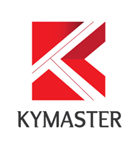
FAQ
The ring die is the core component and primary wear part of a pellet mill. Its design directly impacts:
✅ Pellet quality and capacity (higher OAR = more output)
✅ Energy efficiency (Pelletizing consumes 30–35% of total plant energy)
✅ Operating costs (Ring die wear accounts for 25–30% of maintenance expenses)
To maximize performance and lifespan, proper ring die selection, usage, and maintenance are critical. Below, we analyze the optimal open area ratio (OAR) for different applications.
What is Open Area Ratio (OAR)?
OAR = (Total hole area ÷ Effective die surface area) × 100%
Higher OAR → May increase output but reduce die lifespan if improperly designed.
Lower OAR → Enhanced durability but lower output.
Recommended OAR for Different Materials
Material Type Optimal OAR Key Considerations
Animal Feed 28–32% Balances output & durability
Wood Biomass 25–30% Higher pressure requires thicker walls
Straw/Sawdust 20–25% Prevents cracking under extreme force
KyMaster Recommendation:
Factors like material type, compression ratio, and desired pellet quality also influence the choice. Please consult your ring die manufacturer for application-specific recommendations in advance.